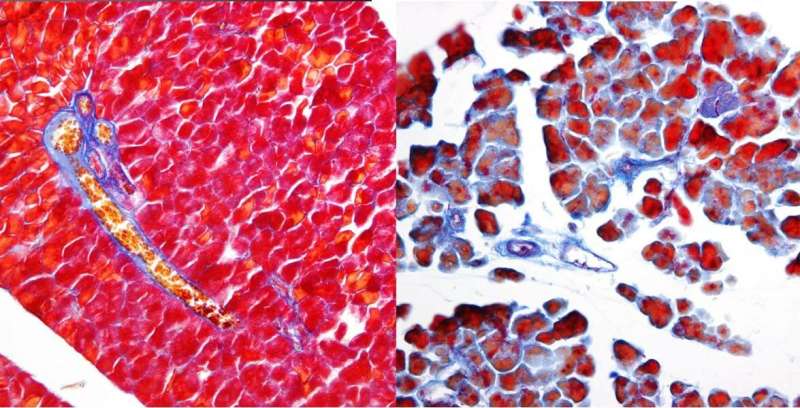Researchers of the University of Malaga Department of Animal Biology have identified a new molecular mechanism involved in pancreas repair. Credit: University of Malaga
Ramón Muñoz-Chápuli and Rita Carmona, researchers of the UMA Department of Animal Biology, have identified a new molecular mechanism involved in pancreas repair.
The experts have demonstrated that Wt1 gene deletion causes deterioration of the pancreas. A mouse study shows that a few days after silencing Wt1, pancreatic tissue deteriorates, producers of pancreatic enzymes called acini lose adhesion, and a severe edema occurs.
Furthermore, they verified that after a pancreatic damage, Wt1 becomes activated in the so-called stellate cells, a special type of repair cell present in the pancreas and kidneys. "Without activation of Wt1, these cells cannot fulfill their function," says Professor Muñoz-Chápuli. These cells play a crucial role in the progression of pancreatic cancer, since they ally with tumor cells.
Thus, the results of this study reveal that Wt1 gene is necessary not only for the normal maintenance of the pancreas, but also for pancreatic repair after a damage.
The Wilms' tumor suppressor gene encodes a protein that acts as a master regulator of the function of many other genes, so it plays an important role in the embryonic development of many organs, including the kidneys, spleen and heart. In recent years, findings have proven that this functional importance also extends to adults.
This study is published in PLOS Genetics. Finding new functions of the Wt1 gene in cardiogenesis and adult hearts is the team's next step.
More information: Laura Ariza et al. The Wilms' tumor suppressor gene regulates pancreas homeostasis and repair, PLOS Genetics (2019). DOI: 10.1371/journal.pgen.1007971
Journal information: PLoS Genetics
Provided by University of Malaga






















